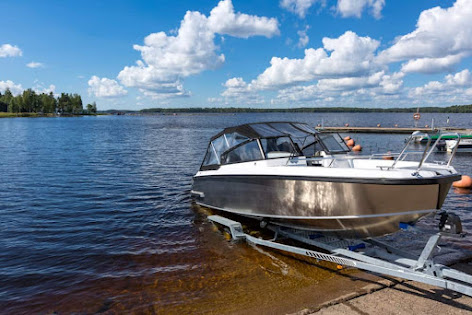How to Install a Winch? Winch Installation and Winch Testing
Electric Winch
The electric winch is used in operations such as lifting and towing heavy objects, erecting equipment, driving piles, and cold pulling reinforcing steel bars in industries such as construction, metallurgy, mining and weight lifting. The working environment that the electric winch can be applied to is: temperature -10°C ~ +40°C (when the ambient temperature is less than 00°C, before starting operation, the lubricating oil should be heated), humidity ≥85%, height is less From 1000 meters, there is no fire accident, explosion etc.
The working grades of the lever used are M4 or M5; as each
working degree increases, its rated drag should decrease by 20%. After
purchasing an electric winch, there is a big problem, which is how to install
the electric winch and test the electric winch. Don't worry, now I will teach
you how to install an electric winch.
A Guide on How to Install the Winch
When installing, disassembling and moving the electric
winch, it is necessary to keep it stable and not tilt excessively without any
collision and severe vibration.
Installing the Electric Winch and Inspecting the Winch
The electric winch must be installed by specialists. The
floor intended for installing the winch must be level and very solid. The
relationship between the winch and the base should be reliable.
·
When mobile use, install the crane on wooden
beams, and connect the wooden block and structure reliably and securely to the
ground anchor with steel wire rope. Pay attention to avoid any loosening.
·
Concrete measurements for installation should
refer to conditions such as soil quality, soil specific gravity and ground
bearing strength, and are determined by standard images of ground stabilizers
suitable for local use.
·
When using in a fixed place, make concrete
foundations, find the horizontal lines with the stepper, and pre-leave a square
pit with a section of 20 x 20 (cm²). The number of pits is determined by the
foundation. Winch screw (see Figure 2). First, install the foundation nail,
then inject concrete into the holes; after bonding, tighten the nuts evenly. If
there are rooms between the frame and the lower fascia, add an adjustment mat
to prevent the frame from being partially deformed. The foundation pit depth
should be determined according to the local geological condition and the type
of electric hoist.
·
The electric hoist operating in the air must be
protected by a rainproof canopy, which cannot obstruct the operators' vision
and the operators must be able to see the leaders and pull objects.
·
The metal casings and electrical appliances of
the electric winch must be evenly connected to the ground. The resistance to
contact with ground should not be more than 4 ohms. The selection and
installation of grounding devices must comply with the requirements of GB/T
232.
·
When used to lift heavy objects, the electric
winch should be installed with an ascending switch above the travel limit.
·
The use of a toothed pulley is prohibited when
selecting a guide pulley.
·
The number of safety circles for the steel wire
rope on the winding drum should not be less than 3 circles. The end of the
steel wire rope must be securely fixed. In order to ensure safety, the distance
from the outer layer of the steel wire rope to the outer edge of the side plate
of the winding drum must be no less than the diameter of the steel wire rope.
·
The connection area between the brake block and
the brake wheel must not be less than 80% of the total area. When loosening the
brake, the brake block should be completely separated from the brake and
maintain a certain clearance. The clearance value is 1~2.5mm between the brake
belt and the brake wheel, 0.25~1mm between the brake block and the brake wheel.




Comments
Post a Comment